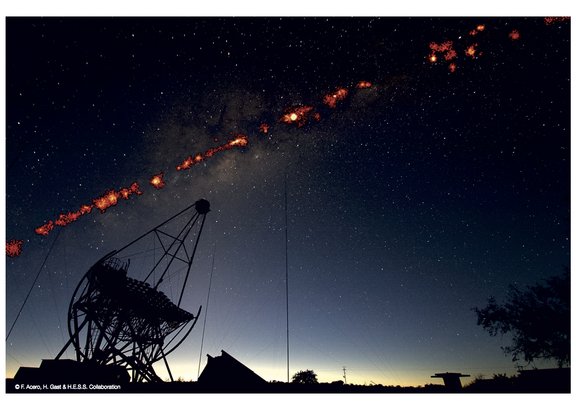High Energy Stereoscopic System (H.E.S.S.)
The High Energy Stereoscopic System (H.E.S.S.) is a ground-based gamma-ray telescope in the highlands of Namibia and sensitive in the energy range from 50 GeV to 100 TeV. The H.E.S.S. array consists of four 12 m diameter reflecting telescopes surrounding a central 28 m telescope. These telescopes collect the brief (nanosecond timescale) flash of Cherenkov light which is emitted from the atmospheric particle shower created when gamma-rays interact with the Earth’s atmosphere.
During its more than 15 years of observation the H.E.S.S. array has proven to be an extremely successful instrument, allowing the discovery of over 100 sources in comparison to the around 12 sources known before its observations began. Over this period of operation the MPIK has played a key role in the construction, maintenance and operation of the array, in addition to taking responsibility of software used for the calibration of H.E.S.S. data and its subsequent analysis.
An important scientific focus of the MPIK H.E.S.S. group is the observation of sources within our galaxy, playing a major role in the completion of the the first survey of the galactic plane in very high energy gamma-rays (see figure on the side). The group also participates in extragalactic observations, working on both the observation of active galactic nuclei and playing a strong role in the search for energetic gamma-rays from gamma-ray bursts. Finally the MPIK group has used the observation of energetic photons to make measurements of fundamental physics, most notably in searching for signatures of dark matter in the local Universe.
